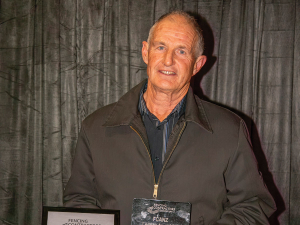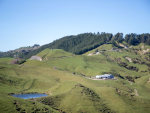Dr Alec Mackay, AgResearch, told farmers attending the field day to look at their properties as “assemblages of a diversity of landscape units,” rather than just one big farm. In the past, people have talked more about average numbers but McKay says this fails to address the reality that parts of a farm differ from each other and need to be treated or managed differently. Better to see a farm as smaller units and see what ‘contribution’ each makes to the business.
“There are opportunities to increase the profitability and performance of a farm by moving away from making average decisions on an average basis across the farm and going out and interrogating the land that makes up the farm.
“Each of the land management units will have their own soil types, physical characteristics relating to organic matter, biology and so on. The best way of doing this is through a visual soil assessment (VSA).” This involves taking a cut of turf from out in a paddock and then one on the fenceline and comparing the physical state of the two. Soil under the fence, where there has been no treading traffic or physical pressure, will show what the soil structure could be out in the paddock.
“So there are some criteria you can look at: the structure, the porosity, the colour and number of earthworms in those two turfs from those two sites.
“They will show what sort of health or condition that soil is in. The physical characteristics of the soil along with the biology and organic matter are essentially what underpin all the services we get from our soil.
“For instance, if you have physically degraded soil – wet and damaged – you will get very little out of your nutrient input. So there’s an underlying need to monitor where your farm is and track that over time for each of the units across the farm. In general, once a year is sufficient.”
While naturally farmers complain about drought, such events can in some ways be of benefit the soil, McKay says. The drying and cracking of soil is one of the restorative processes, though if soils get too dry they become brittle and crack and can be damaged.
“At the same stage, when a soil is too wet and you cultivate it you can compact it so it can get too brittle and dry. Then it gets hydrophobic – water repellant.”









